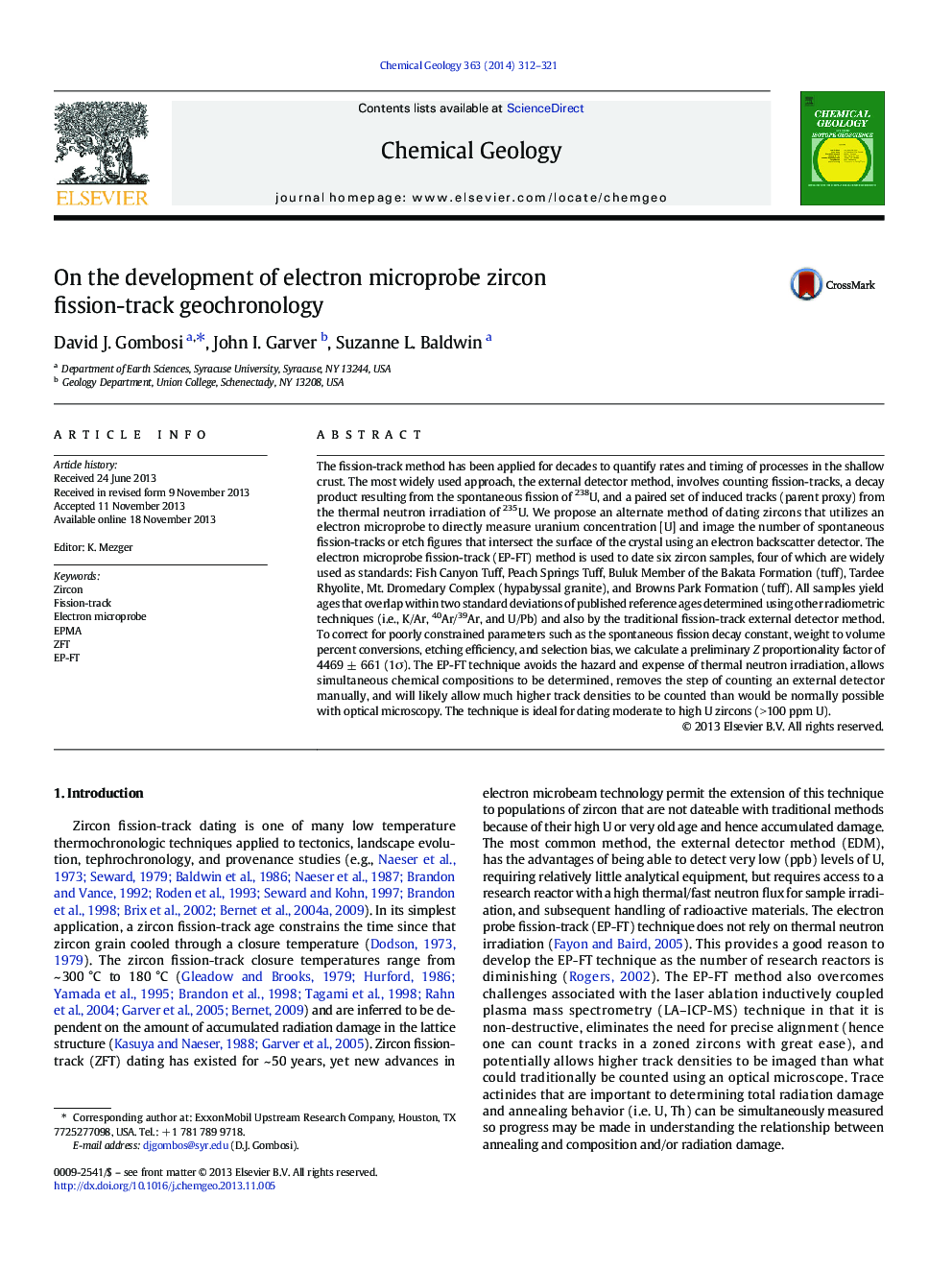| Article ID | Journal | Published Year | Pages | File Type |
|---|---|---|---|---|
| 6436714 | Chemical Geology | 2014 | 10 Pages |
â¢We developed a new method of fission-track dating utilizing an electron microprobe.â¢Ages on standards are reproducible and are concordant with other radiometric techniques.â¢Single grain precision equals or exceeds that of the typical neutron irradiation methods.â¢The method is non-destructive.â¢The method may be used for dating zircon with high track densities (typically Precambrian).
The fission-track method has been applied for decades to quantify rates and timing of processes in the shallow crust. The most widely used approach, the external detector method, involves counting fission-tracks, a decay product resulting from the spontaneous fission of 238U, and a paired set of induced tracks (parent proxy) from the thermal neutron irradiation of 235U. We propose an alternate method of dating zircons that utilizes an electron microprobe to directly measure uranium concentration [U] and image the number of spontaneous fission-tracks or etch figures that intersect the surface of the crystal using an electron backscatter detector. The electron microprobe fission-track (EP-FT) method is used to date six zircon samples, four of which are widely used as standards: Fish Canyon Tuff, Peach Springs Tuff, Buluk Member of the Bakata Formation (tuff), Tardee Rhyolite, Mt. Dromedary Complex (hypabyssal granite), and Browns Park Formation (tuff). All samples yield ages that overlap within two standard deviations of published reference ages determined using other radiometric techniques (i.e., K/Ar, 40Ar/39Ar, and U/Pb) and also by the traditional fission-track external detector method. To correct for poorly constrained parameters such as the spontaneous fission decay constant, weight to volume percent conversions, etching efficiency, and selection bias, we calculate a preliminary Z proportionality factor of 4469 ± 661 (1Ï). The EP-FT technique avoids the hazard and expense of thermal neutron irradiation, allows simultaneous chemical compositions to be determined, removes the step of counting an external detector manually, and will likely allow much higher track densities to be counted than would be normally possible with optical microscopy. The technique is ideal for dating moderate to high U zircons (>100 ppm U).
